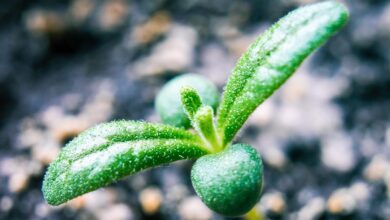
Why We Need Plants in Our Homes and How to Take Care of Them
Taking care of plants isn’t the easiest thing to do, but it is a mandatory thing to do for anyone who wants a regular supply of clean indoor air.
You need to ensure that you get your lighting and watering game on point so that you can guarantee the health of your plants.
This article will tell you why you need plants in your house or office and how to maintain them healthy.
Why Do We Need House Plants
For starters, bringing the green from the outdoors to the indoors helps us brighten our living spaces, whether at home or at the workplace, which gives the home an unbeatable synthetic beauty.
That aside, here are other reasons why you need house plants:
(1) Purifying indoor air
Living green plants remove up to 90% of toxins that could otherwise intoxicate the air we breathe in our homes.
There are tons of toxic substances that we bring into our homes through the rugs, grocery bags, furniture, and most fabrics that we buy.
Vinyl also contains volatile organic compounds (VOCs), and so does cigarette smoke. These VOCs are often trapped in buildings especially if the building doesn’t have sufficient ventilation. The good thing is that plants readily convert these toxins to food.
On the other hand, the man-made fibers, inks, solvents and paint that beautify our homes all contain high concentrations of benzene, trichloroethylene, and/or formaldehyde. In-office settings, these dangerous substances are brought in by books and printed papers.
Potted plants will help you minimize the effects of these substances.
(2) Efficient breathing
Primarily, breathing is a process where your body inhales oxygen and exhales the unwanted carbon dioxide. Us humans don’t need carbon dioxide, but plants use it during photosynthesis. Plants release oxygen- which they don’t need and take in carbon dioxide.
Bringing in plants to your interior spaces will increase oxygen levels and lower carbon dioxide levels in your home.
It is obvious that plants and humans need each other to complete this opposite pattern of gas use.
Note that the process of photosynthesis ceases at night, meaning that most plants stop absorbing carbon dioxide. Be very careful when choosing the plants to put in the bedrooms, as some will be competing with you for oxygen.
Choose plants such as orchids, epiphytic bromeliads, and succulents if you want fresh air in the bedrooms during the night.
(3) Boosting health
Research shows that surgical patients heal faster when inwards filled with indoor plants as compared to those in bare-walled, empty wards.
A recent study by Kansas State University suggests that plants lower patients’ pain levels, heart rate, fatigue, anxiety, and blood pressure, which aids their speedy recovery.
Closer home, adding plants to your living spaces lowers your chances of suffering fatigue, headaches, coughs, and colds, among other flu-like symptoms.
Researchers at the Agricultural University of Norway have also suggested that employees’ sick leave cases reduce by more than 60% when plants are brought into an office.
How to Take Care of Plants
Taking care of indoor plants is simple as providing them with food, water, light and warmth. That’s all.
The hard part is knowing how much of the four requirements the plant needs!
Here are a few tips that will help you with that:
• Avoid placing plants in too warm areas especially those areas that are exposed to direct sunlight, or too cold areas such as near air conditioning ducts. Target to maintain the plants’ temperature at 13ºC.
• Eliminate all possible breeding spots for flies.
• Place plants that prefer bright light near the south-facing window and never near the North windows. Those that need minimal light will do well near a north-facing window. Plants that need moderate sun will be fine near east-and west-facing windows. It will help if you could invest in a modern grow lights fixture.
• Regular pruning will go a long way in maintaining healthy plants.
• Photosynthesis doesn’t provide plants with all the food they need to be healthy. Provide them with fertilizers on a regular basis.
• Maintain regular circulation of air because still air allows dust to settle on the leaves and create a coating that affects plants’ health in a negative way.
Conclusion
Filling your interior spaces with houseplants is your best interior décor decision you have ever made.
You add greenery to your indoors and at the same time bring in a lasting remedy to your breathing and other health problems. You are basically enhancing your quality of life.






